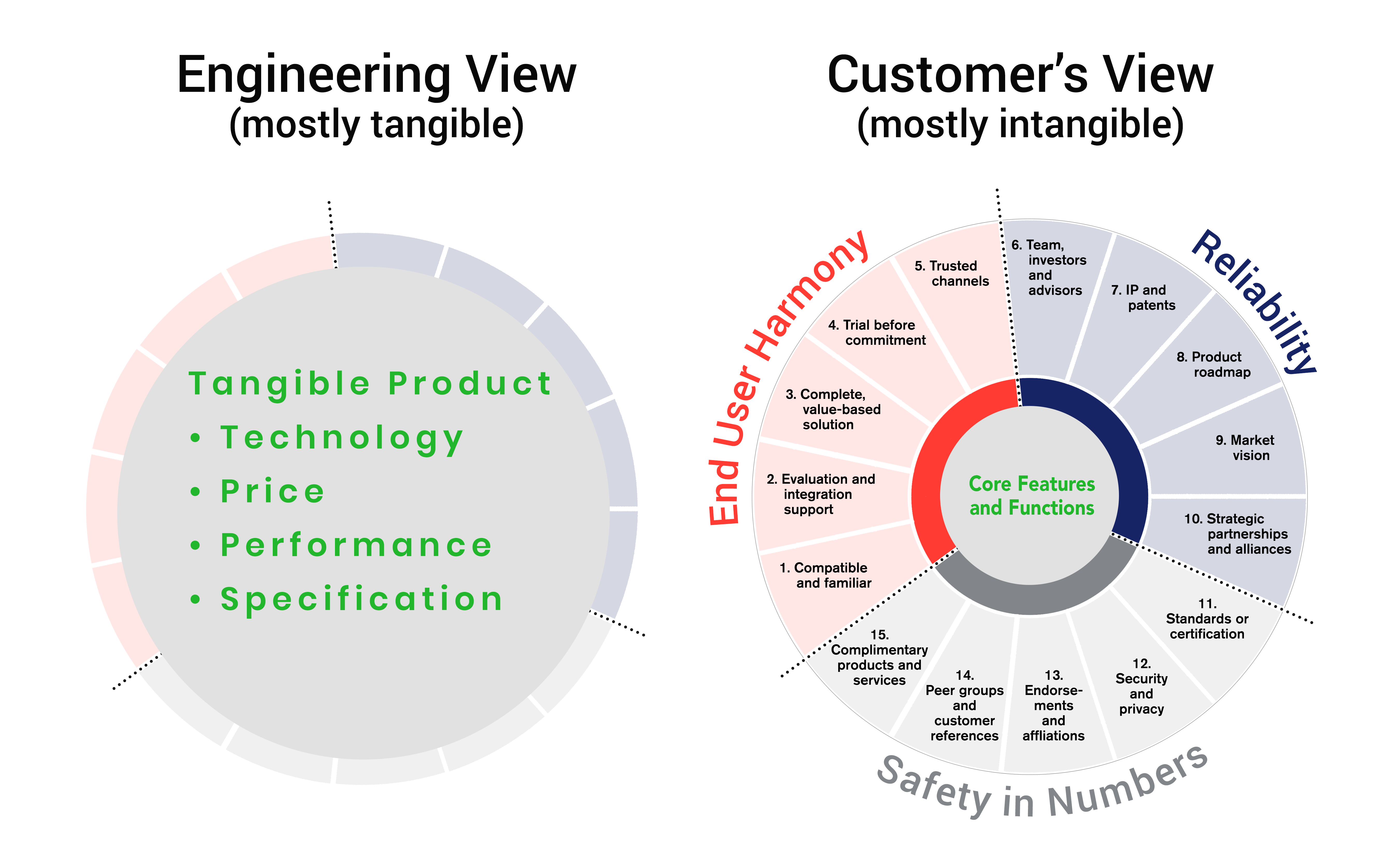Product Offering Development
What are your customers actually buying?

People evaluate the attractiveness of a product using a subjective method called “perceived value.” And that means a product offering can have higher performance or more features than all others, yet still fail in the marketplace. Perhaps you’ve heard the phrase “the best product rarely wins.”
All industries are littered with a trail of failed companies. They had technologically superior products, but were defeated by competitors who were better at creating a product using the customer’s point of view.
Large-scale surveys of customer satisfaction reveal the top three reasons customers don’t buy your product, a.k.a. the missing elements in your offering:
End User Harmony – a feeling of closeness and understanding that someone has for another person or organization because of their similar qualities, ideas, or interests
Category Commitment – the quality of performing consistently well; is trustworthy and has the appropriate domain expertise.
Safety in Numbers – the state of being sure or certain about something, or a strong feeling of confidence; freedom from self-doubt or uncertainty.
Notice these areas of dissatisfaction are not related to price, computing speed or technical features!!
Dissatisfaction is rooted in the lack of intangible attributes that surround the core technology or product.
And that is what your customers are actually buying!! An offering that includes:
- the elements of end-user understanding, familiarity and the avoidance of change
- demonstrated credibility of the supplier, who has the characteristics of an ideal partner
- support from a well-established category or infrastructure that is completely independent.
These intangible attributes must surround the tangible, core technology of your offering in order for people to actually accept and adopt it.
Our Product Offering Framework
The Low Risk Recipe concept illustrates that your core technology makes up a very small proportion of the value that is delivered to the end user. Instead, the largest contribution to value creation comes from attributes that reduce perceived risk. This includes proving you understand and are dedicated to the customer’s situation or business.

The Low Risk Recipe is designed to ensure the success of new products and innovations that represent perceived risk to the customer or end user. And perceived risk is always higher when the end user is asked to learn something new and/or change their behavior.
The world of high-tech is fundamentally in this category, but there are exceptions. In fact, anything that is in a low-risk consumer category, like candy bars and T-shirts, would not be a candidate for reinvention.
Offering Reinvention
Instead of persuading individuals to change, you must “reinvent” your product offering. And it must become a better fit for the needs of individuals and groups. In all examples of successful innovation, it is not people who change, but the innovations themselves.
As your offering moves through the adoption process, intangibles must be added to the core innovation so that the product meets the safety needs of each adopter group in sequence. Often, pioneering new products lose their initial prominence because a new entrant is more successful in assembling a product based on an effective mix of intangibles. This can be the case even if the second product is not technically superior.
For business leaders managing a product, the Low Risk Recipe is your roadmap to success. It’s easy to talk about “sales” as the gatekeeper of buyer behavior. But the real barriers to adoption are in the lack of industry standards, the absence of a supporting infrastructure, or the inability of a vendor to lower perceived risk using intangible product attributes.

